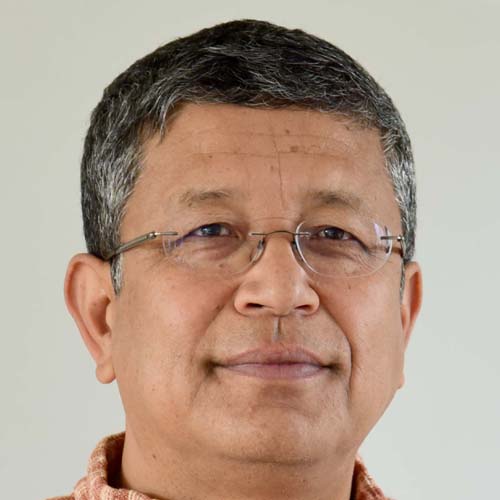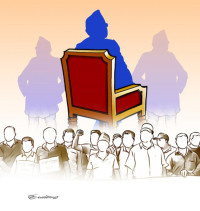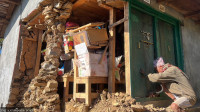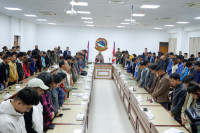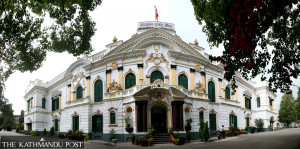Columns
The men behind the 1923 treaty
The treaty was partly Britain's acknowledgement of the sacrifices made by Nepali men during World War I.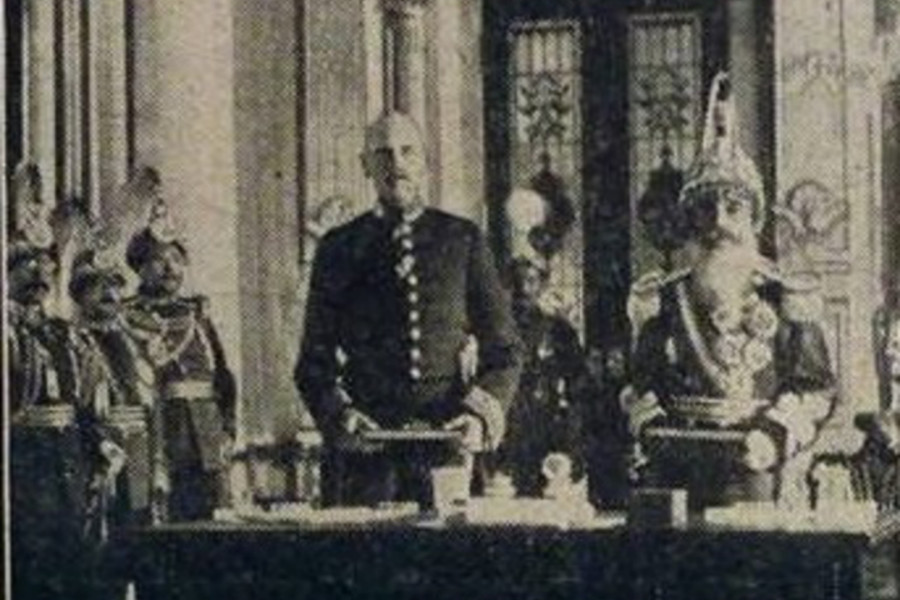
Deepak Thapa
The centenary of the 1923 treaty between Nepal and the United Kingdom has been in the news for some time now, with write-ups by Nepalis and Brits alike and events organised here and out there as well. For good reason, one would have to admit, since there is general consensus that the treaty represented an explicit recognition of Nepal’s independence after years of serving as a vassal to the British Empire.
For Chandra Shamsher, it would have been a personal triumph. Not only in terms of the annual Rs1 million that Britain agreed to pay Nepal, and which is believed to have been siphoned off into the prime minister’s personal coffers. Having participated in the Delhi Durbars of 1877, 1903 and 1911, which had been adopted from the Mughal tradition to partly reinforce fealty towards the Empire by kings, princes and nawabs from all over the subcontinent, it must have riled Chandra Shamsher to be only one among a bevy of others at such gatherings. Hence, being granted independent status through a formal process would surely have been an achievement for the wily ruler of Nepal.
That initial discussions on the treaty were even possible because of the immense sacrifices made by Nepali men during World War I in service of the British crown is well documented. That the sacrifice came through the active encouragement of recruitment drives by the government of Nepal, akin to conscription, is also well-known. The war certainly did not directly affect Chandra Shamsher, his clan and other courtiers. The brunt of that was borne by the so-designated “martial groups” of Nepal, consisting primarily of Magars, Gurungs, Thakuris, Rais and Limbus. As the scholar David Seddon has noted, the number of men from these groups engaged, sometimes forcibly, in Britain’s war effort “represented a quarter of the total male population of the ethnic groups involved”.
The Great Sacrifice
Six months before the treaty was signed in Kathmandu, a meeting of the Royal Geographical Society in London heard C John Morris recount the journey down the Arun Valley from Tibet. Morris had been part of the team led by Charles Bruce in the 1922 failed assault on Mount Everest. Among those who commented on the presentation was the avid Nepaliphile, Ralph Lilley Turner, a former Gurkha officer who was by then teaching at the-then School of Oriental Studies in London. True to his position as a professor of Sanskrit, he discusses the languages of Nepal. And, then, in classic British understatement, he says: “I do not know, my lord, whether before the Royal Geographical Society I may turn from this short excursus on the language of the people of whom we have been hearing to-night to say a few words on one of their other activities.”
Turner’s words are worth quoting in full since they provide the backdrop to the 1923 treaty. “We have heard to-night casual mention of the Gurkha battalions of the Indian Army. I feel that the British public at large have no clear realization of what the inhabitants of that little strip of country—it looks little enough on the map though it is 700 miles long—have done for us in the last few years. The population of Nepal is estimated to be not more than 3,000,000 people, and of that probably less than half belong to the fighting tribes. And yet during the years of the war 200,000 men were recruited from that country to help us; 55,000 were actually enlisted in the Gurkha battalions of the Indian Army. We had a certain ideal, perhaps, before us, and they too had their ideal not the same as ours: it was the ideal of being true to their salt. When General Bruce came back from the Mount Everest Expedition he opened in Darjeeling a memorial to the Gurkhas who had fallen in the war. It was a Rest House for those widows and orphans who come down from the mountains to receive their pensions from the British Government year by year. In the middle of the courtyard there is a pillar on which is this inscription in Khaskura: ‘To all the Gurkhas who in England’s Great War between 1914 and 1918 passed to the other world this dharmsala is built.’ The bodies of those who thus passed over fell in many parts of the world. Gurkha soldiers were to be found cheerfully enduring tropic heat or the cold of the northern winters or the thirst of sandy deserts. Almost wherever there was a theatre of war Gurkhas were to be found, and everywhere they added only lustre to their name for high courage. Gurkhas helped to hold the sodden trenches of France in that first terrible winter and during the succeeding summer. Their graves are thick on the Peninsula, in Sinai, and on the stony hills of Judea. They fell in the forests of Africa and on the plains of Tigris and Euphrates, and even among the wild mountains that border on the Caspian Sea. And to those who know, when they see the map of that country which we have had before us to-night, of Nepal, there must always recur the thought of what the people of that country have done for us.”
Chandra Shamsher has been credited with helping craft the conditions for the signing of the treaty, although given his duplicitous role of providing the British with what for him would have amounted to nothing more than cannon fodder in pursuit of that goal, some of that sheen should have been deliberately scrubbed off. The role of people like Turner, Bruce and scores of others should not be forgotten either, since it was they who shaped the perception of those who mattered in the halls of power in London.
Of course, the highest regard for having secured our complete independence, on paper at least, would have to go to the 25,000 or so Nepalis who lost their lives fighting a war most would have had scant understanding of the reasons behind it. Churchill’s immortal words, “never has so much been owed by so many to so few”, were to come in reference to the context of another war which entangled our country in similar fashion. But it could and should have been applied equally to our own case and the 1923 treaty. Unfortunately, the Nepali state has yet to recognise that plain and simple truth.




 17.12°C Kathmandu
17.12°C Kathmandu